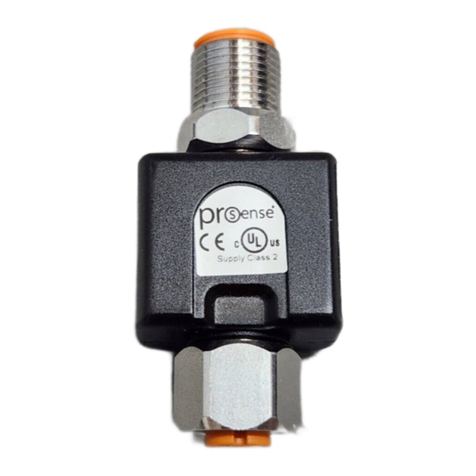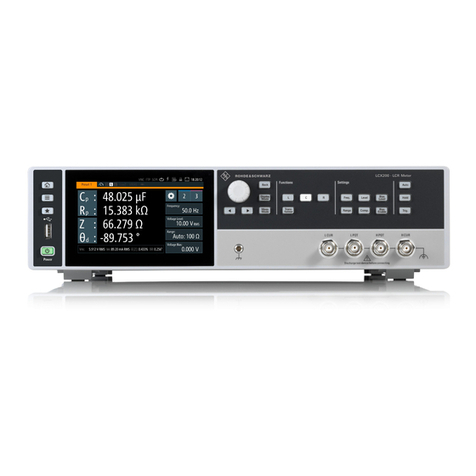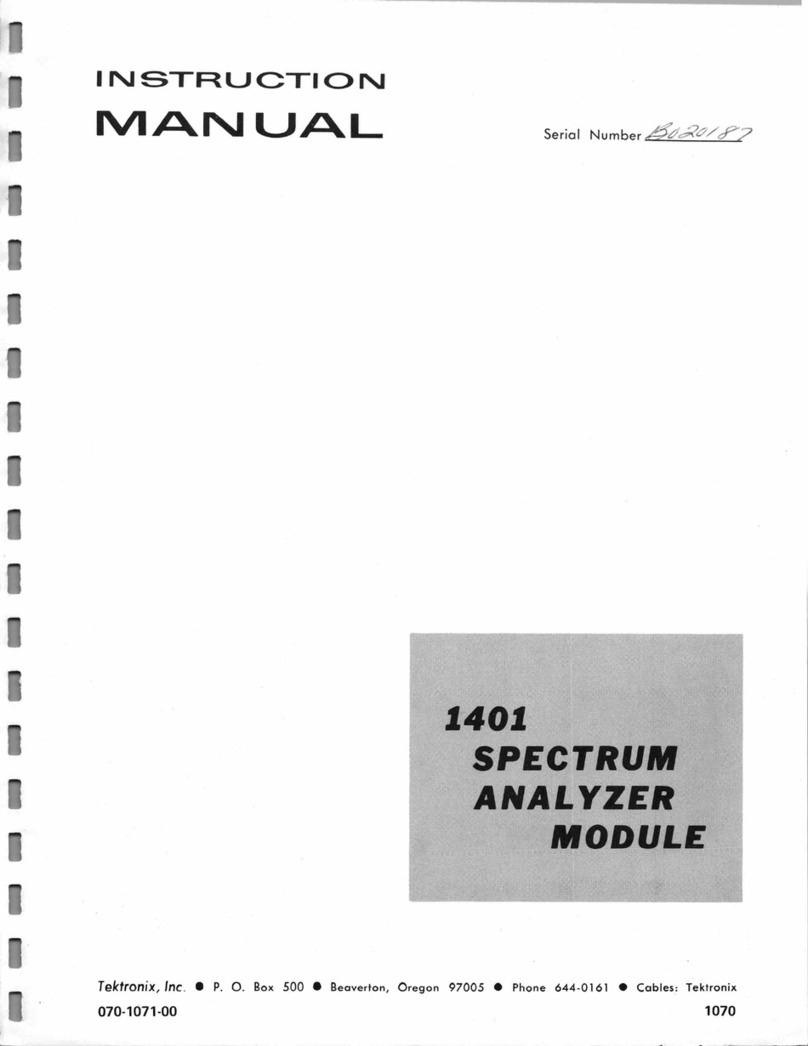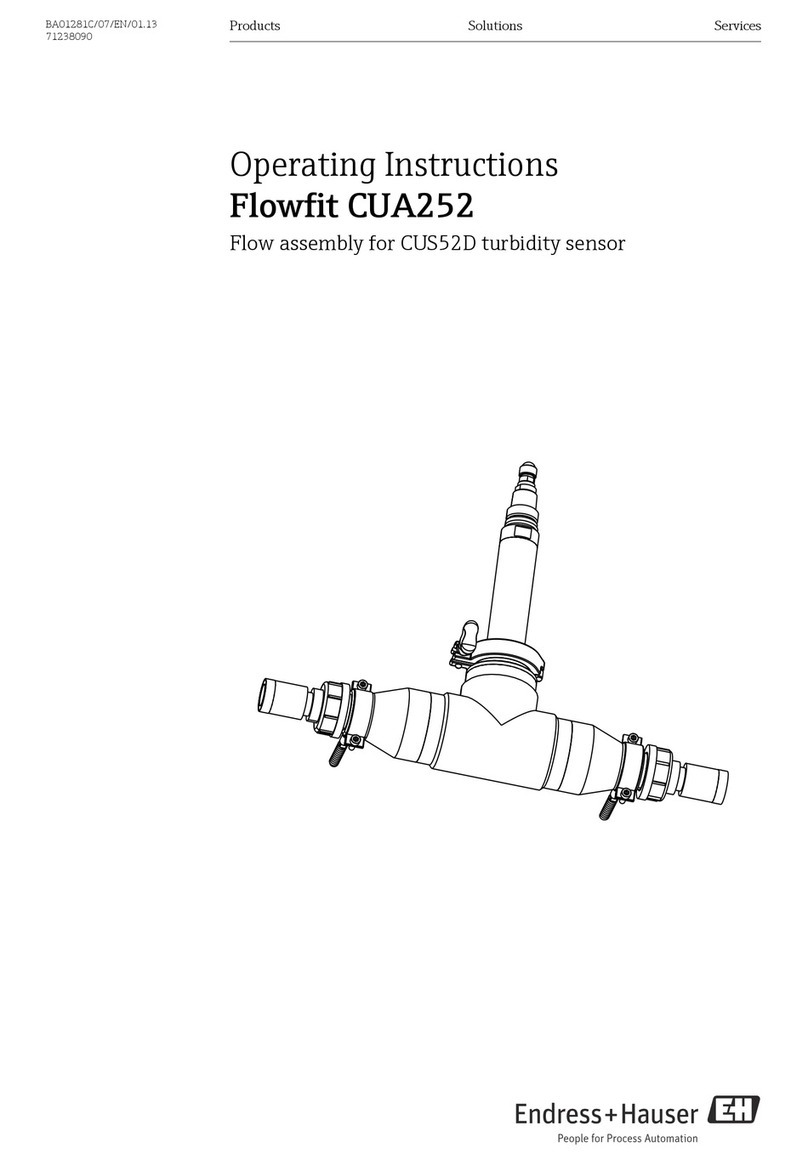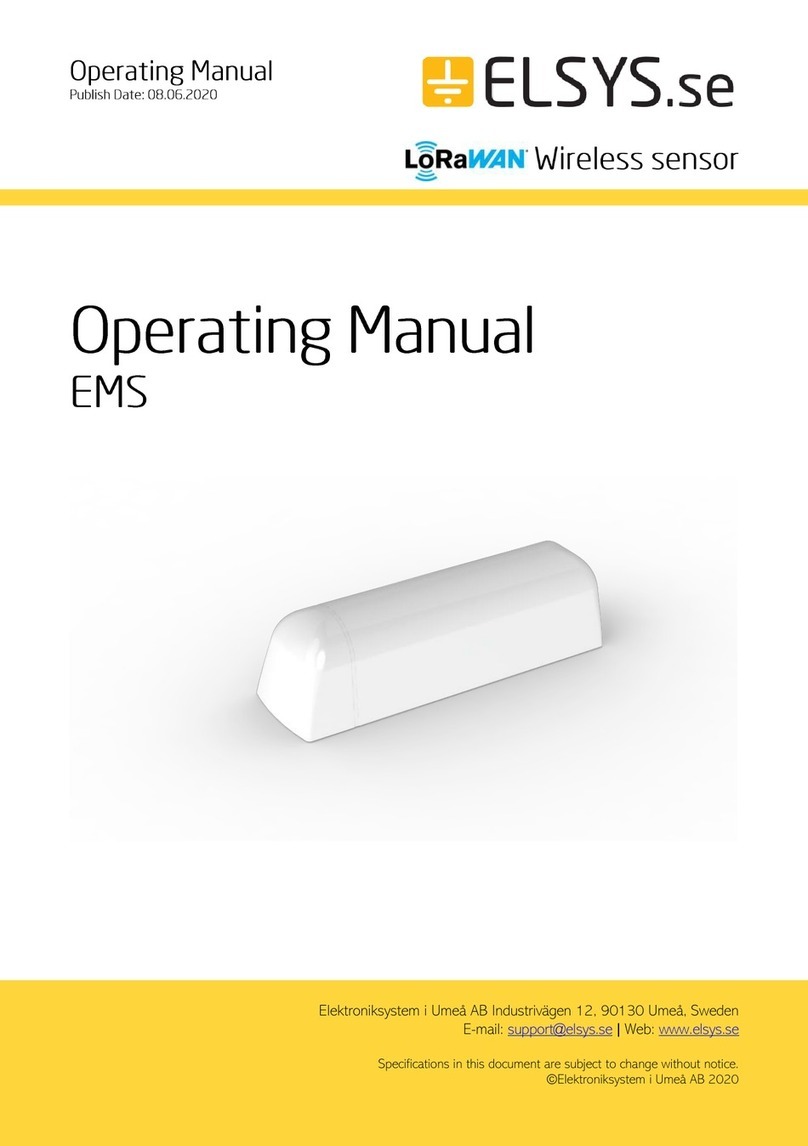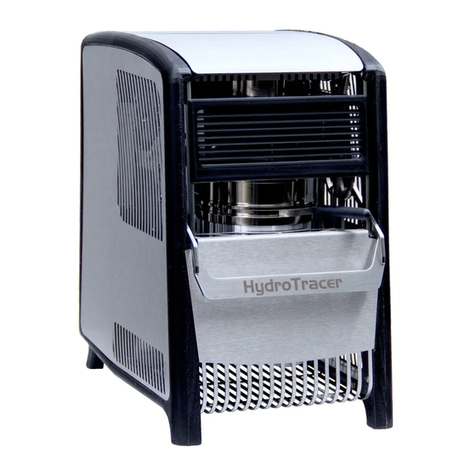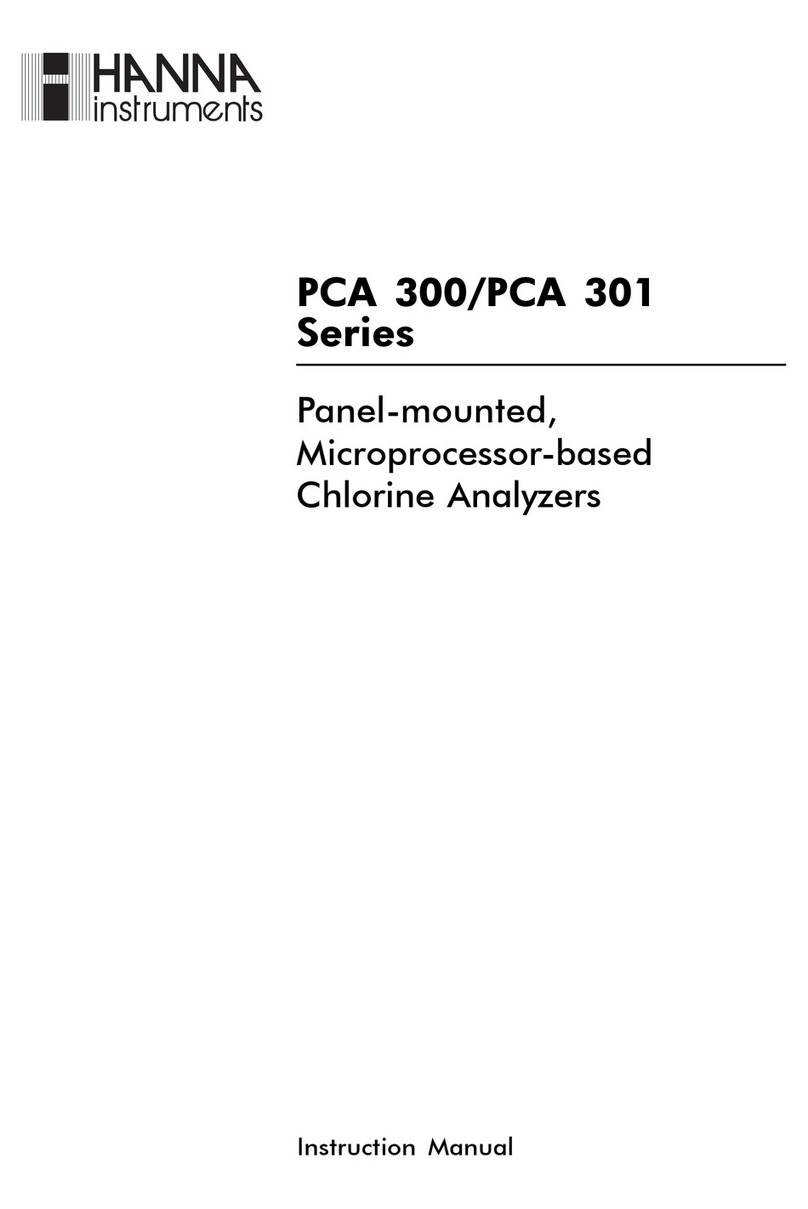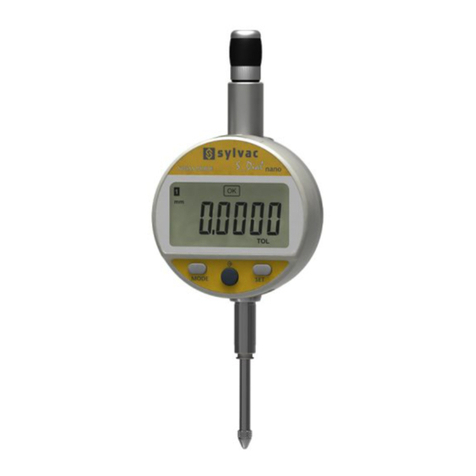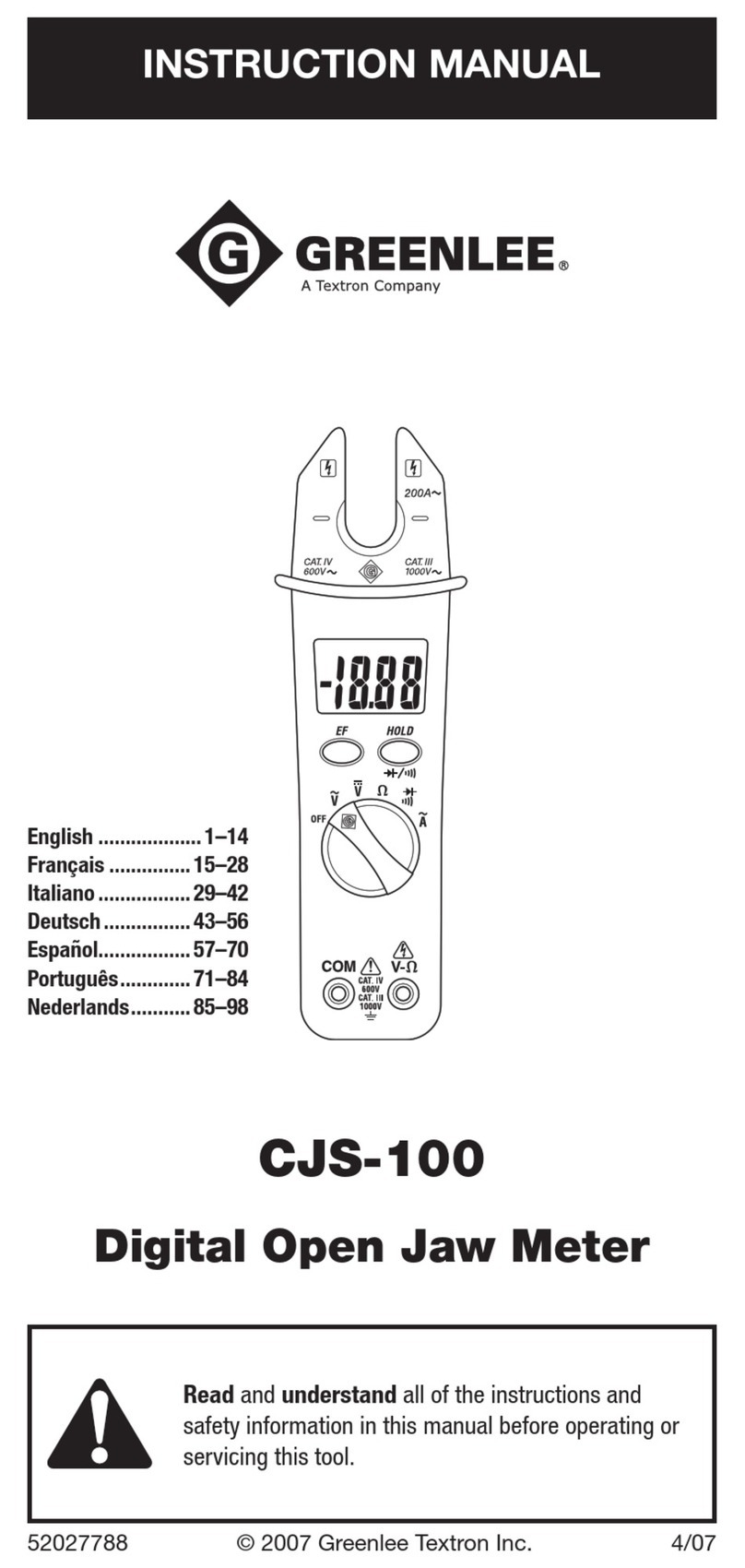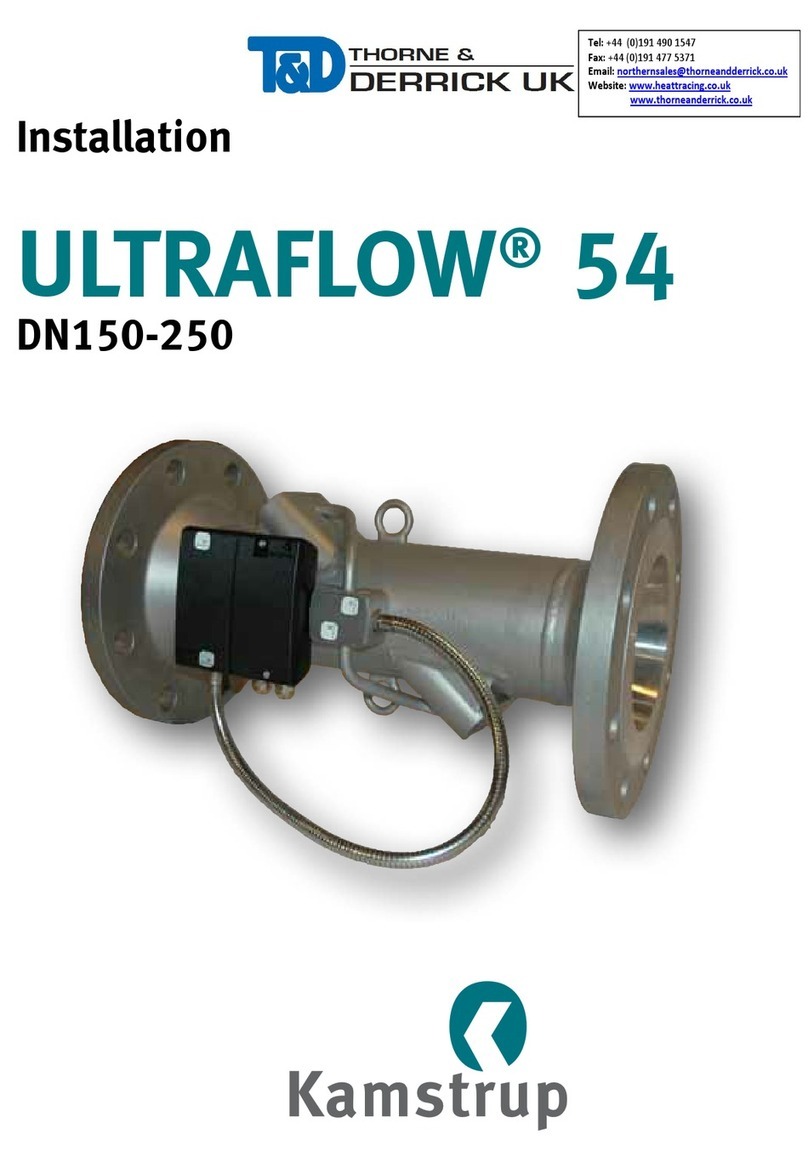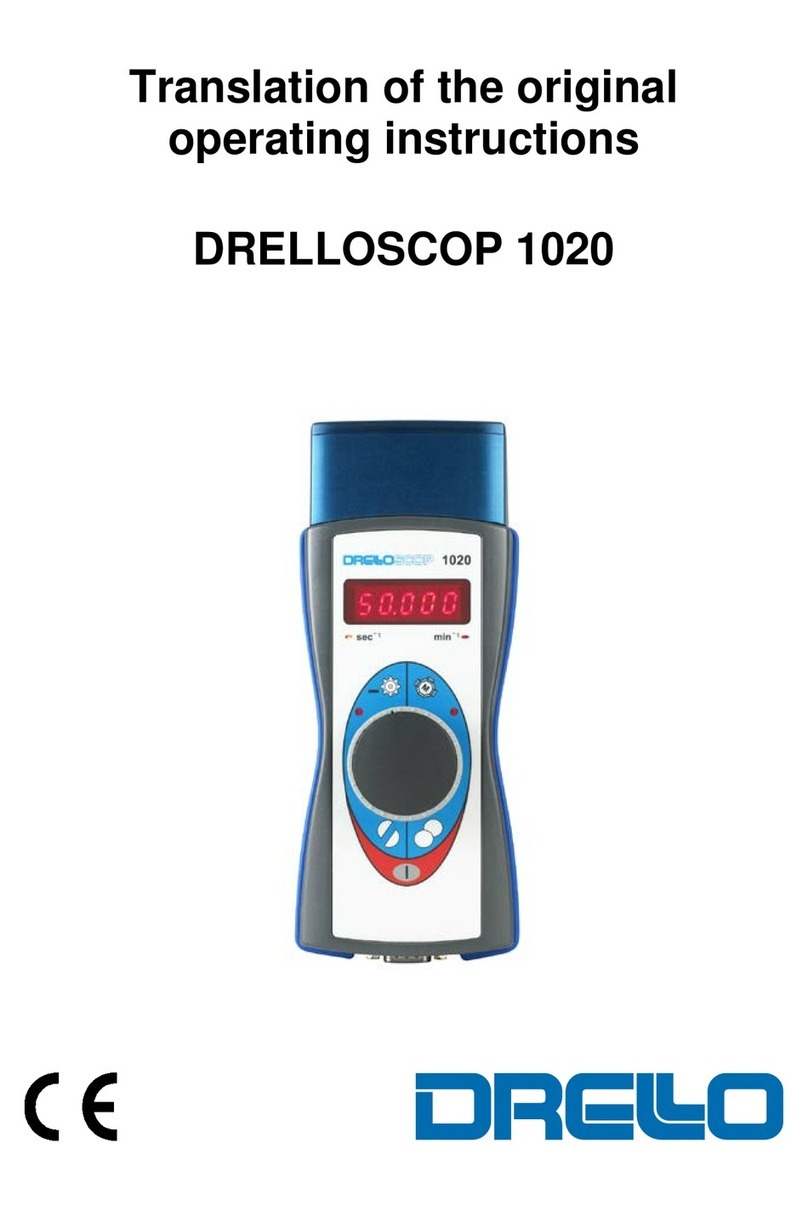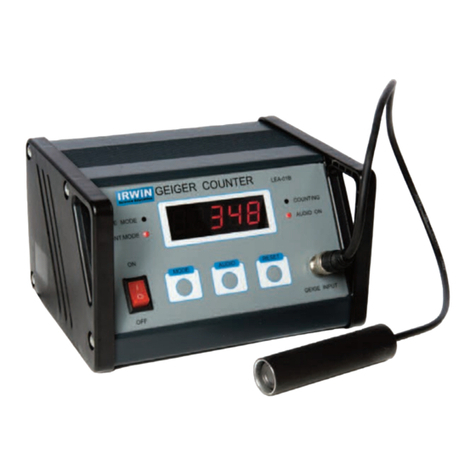AutomationDirect ProSense DPM3 Series User manual

ProSenSe DPM3 SerieS
Digital Panel Meter
for ProceSS, teMPerature
anD loaD cell inPut SignalS
Models:
uSer Manual
DPM3-AT-H DPM3-AT-L
DPM3-AT-2R-H DPM3-AT-2R-L
DPM3-AT-4R-H DPM3-AT-4R-L
DPM3-AT-A-H DPM3-AT-A-L
DPM3-AT-A2R-H DPM3-AT-A2R-L
Scan or click the QR code for a series of Configuration and Programming
videos for the ProSense DMP Series Panel Meters

DPM3 User Manual, 1st Edition
User Manual - DPM3 Series Panel Meters
2
UL
CUS
R
In this Chapter...
General Information......................................................................................................4
Package Contents.........................................................................................................4
Recycling Instructions...................................................................................................4
General Safety Considerations ......................................................................................4
Symbols Identification ..................................................................................................4
Maintenance ................................................................................................................5
Technical Support ........................................................................................................5
Agency Approvals.........................................................................................................5
Device Description.........................................................................................................6
Dimensions and Mounting............................................................................................7
Installation....................................................................................................................7
Wiring Terminals ...........................................................................................................8
Wiring Examples............................................................................................................9
Process Input Signal Wiring Diagrams (mA) ................................................................9
Process Input Signal Wiring Diagram (V)....................................................................10
Load Cell Input Signal Wiring Diagram ......................................................................10
Pt100 Sensor Input Wiring Diagram...........................................................................10
Thermocouple (J, K, T, N) Sensor Input Wiring Diagram ............................................11
Display and Key Pad ....................................................................................................12
Configuration:..............................................................................................................12
Programming numerical values ..................................................................................13
Input Configuration.....................................................................................................14
Process input..............................................................................................................15
Load cell input ...........................................................................................................15
Pt100 RTD Input ........................................................................................................15
Thermocouple Input...................................................................................................16
Display Configuration..................................................................................................17
Scaling .......................................................................................................................17
Programming of the scale ..........................................................................................18
SCAL method .............................................................................................................19
tEACH method ...........................................................................................................19
Programming of a nonlinear process..........................................................................19

DPM3 User Manual, 1st Edition
User Manual - DPM3 Series Panel Meters
3
Weighted Average Filter P ..........................................................................................19
Round ........................................................................................................................19
Brightness ..................................................................................................................20
Eco.............................................................................................................................20
Input Error..................................................................................................................20
Additional Functions....................................................................................................20
MAX/MIN function.....................................................................................................22
Logic functions...........................................................................................................23
Logic functions menu.................................................................................................24
Table of programmable functions ..............................................................................24
Configuration Lock Out...............................................................................................25
Lock-out menu diagram .............................................................................................26
Output Options............................................................................................................28
Relay Configuration....................................................................................................28
Description of Operation............................................................................................28
Relay Configuration menu diagram............................................................................29
Direct access to the relay setpoints value programming.............................................30
Analog output............................................................................................................30
Analog output menu diagram ....................................................................................31
Technical Specifications...............................................................................................32
Notes:...........................................................................................................................34

DPM3 User Manual, 1st Edition
User Manual - DPM3 Series Panel Meters
4
General Information
Package Contents
• DPM3 Series digital panel meter
• Quick start guide
• Mounting panel accessories (a sealing gasket and 2 fixing clips)
• Wiring accessories (plug-in terminal block connectors and 2 key tools for wire insertion)
• 4 adhesive engineering unit label sheets
Recycling Instructions
This electronic instrument is covered by the 2002/96/CE European Directive so, it is properly
marked with the cros]sed-out wheeled bin symbol that makes reference to the selective collection
for electrical and electronic equipment which indicates that at the end of its lifetime, the final
user cannot dispose of it as unsorted municipal waste.
In order to protect the environment and in agreement with the European legislation regarding
waste of electrical and electronic equipment from products put on the market after August 13,
2005, the user can give it back, without any cost, to the place where it was acquired to proceed
to its controlled treatment and recycling.
General Safety Considerations
All instructions and guidelines for the installation and manipulation that are present in this
manual must be considered to ensure personal safety and to prevent damage to either the
instrument or any equipment connected to it.
Safety of any equipment incorporated to this instrument is the responsibility of the system
installer.
If this electronic indicator is used in a manner not specified by the manufacturer in this manual,
the protection provided by the instrument may be impaired.
Symbols Identification
Warning: Potential risk of danger.
Read complete instructions when this symbol appears in order to know the potential risk and
know how to avoid it.
Warning: Risk of electric shock.
Instrument protected by double isolation or reinforced isolation.

DPM3 User Manual, 1st Edition
User Manual - DPM3 Series Panel Meters
5
Maintenance
To ensure instrument accuracy, it is recommended to check its performance according to the
technical specifications listed in this manual.
For front cover cleaning, just wipe with a damp cloth and neutral soap product. DO NOT USE
SOLVENTS!
Technical Support
We strive to make our manuals the best in the industry. We rely on your feedback to let us
know if we are reaching our goal. If you cannot find the solution to your particular application,
or, if for any reason you need technical assistance, please call us at:
1-800-633-0405
Our technical support group will work with you to answer your questions. They are available
Monday through Friday from 9:00 A.M. to 6:00 P.M. Eastern Time. We also encourage you
to visit our web site where you can find technical and non-technical information about our
products and our company.
www.AutomationDirect.com
Agency Approvals

DPM3 User Manual, 1st Edition
User Manual - DPM3 Series Panel Meters
6
Device Description
The ProSense DPM3 series offers a simple, feature packed digital display of analog process
signals, temperature in either Fahrenheit or Celsius from RTD or Thermocouple temperature
sensors, load cell, or potentiometer inputs. The 5-digit tri-color red, green or amber LED
display is easily scaled into any engineering units from -19999 to 39999 with a selectable
decimal point location. Two point direct or reverse acting linear scaling values can be entered
manually or by introducing actual sensed process values in Teach mode. Additionally non-
linear processes can be scaled by entering up to 11 scaling points. Models are available with
two SPDT or four SPST relay outputs that can be set to activate on an increasing or decreasing
input signal with hysteresis or time delay operation. Additionally the display color can be set
to change on relay operation. Models are also available with a 4-20mA analog output. The
meter is powered from an external AC or DC power supply and provides both 24VDC and
10VDC for external sensor excitation. The 1/8 DIN housing is easy to install in a panel and
the meter face has an IP65 rating. Configuration parameters can be totally or selectively
locked out to prevent unauthorized or accidental changes to the meter’s operation. Other
features include memory and reset of minimum and maximum display values, three tare
functions, display hold function, filtering to minimize display bounce, and display brightness
adjustment. ProSense digital panel meters are backed by a 3 year warranty.
• 96 x 48mm 1/8 DIN
• Simple menu driven pushbutton configuration
• 5 digit (-19999 to 39999) tri-color (red, green, amber) LED display
• Selectable decimal point
• Process (±10V, ±20mA)
• Temperature (RTD: Pt100, TC: J, K, T, N, Resolution: 1°F, 0.1°F, 1°C, 0.1°C)
• Potentiometer
• Load cell (±15mV, ±30mV, ±150mV)
• AC or DC powered
• Sensor excitation voltage 24V and 10V
• Display scaling or process teaching modes
• Optional 4-20mA analog output
• Optional (2) Form C SPDT or (4) Form A SPST relays
Activation on increasing or decreasing input signal
Hysteresis or time delay operation
Display color change on relay operation
• Configuration for direct or reverse acting linear
processes and up to 11 point non-linear processes
• Total or selective configuration lock out
• Programmable functions include:
Minimum and maximum value memory
Minimum and maximum value reset

DPM3 User Manual, 1st Edition
User Manual - DPM3 Series Panel Meters
7
Tare
Hold
• Filtering to minimize display bounce
• Display brightness adjustment
• 3 year warranty
Dimensions and Mounting
(2) Fixing clips
Sealing gasket
DPM3 Meter
Panel mounting surface
Installation
To install the instrument, prepare a 92mm x 45mm
panel cut-out and slide the unit inwards making sure
to place the sealing gasket between the front side panel
and the front bezel.
While holding the unit in place, put the fixing clips on
both sides of the case and slide them through the guide
tracks until they reach the panel at the rear side.
Press slightly to fasten the clips to the latching slots on the case and get the unit fully assembled
and close fitted to achieve a good seal.
To remove the instrument from the panel, pull the rear fixing clips latching tabs outwards until
they are disengaged, then slide the fixing clips back over the case.
Installation
Dimensions 96 x 48 x 83.1mm (1/8 DIN)
Panel Cutout 92 x 45mm
(Max. panel thickness 10mm)
Case Material Polycarbonate UL 94 V-0

DPM3 User Manual, 1st Edition
User Manual - DPM3 Series Panel Meters
8
Wiring Terminals
CN1 CN2 CN3
1 2
1 2 3 4 5 6 7 8
1 2 3 4
1
2
3
4
5
6
CN4 CN5
1
2
CN6
CN2
Input Signal / Excitation
Process Temperature Load Cell
1-EXC24V --- -EXC10
2+EXC24V --- ---
3--- --- +EXC10
4--- Pt100 A ---
5+mA --- ---
6+V --- ---
7--- Pt100
B+TC +mV
8-V / -mA
(COM)
Pt100
B-TC -mV (COM)
CN3
1Common
2Tare
3Tare reset
4 Hold
Polarity insensitive for
DC power
CN1
AC
Supply DC
Supply
1 Line 1 VDC
2 Neutral 2 VDC
CN2 and CN3 Terminals CN1, CN4, CN5
and CN6 Terminals
CN6
Analog Output
1(-) 4-20mA
2 (+) 4-20mA
CN5 (Relay 1)
1NO1
2CM1
3 NC1
CN4 (Relay 2)
4NO2
5CM2
6NC2
2 SPDT Relays (-2R)
4 SPST Relays (-4R)
CN5
1NO1
2NO2
3 NO3
CN4
4NO4
5Unused
6CM (All)
NO: Normally open, CM: Common,
NC: Normally closed
Terminals
Connector CN1 CN2 CN3 CN4 &
CN5 CN6
Wire cross section 0.08 to 2.5mm²
(28 to 12 AWG)
0.08 to 0.5mm²
(28 to 20 AWG)
0.08 to 0.5mm²
(28 to 20 AWG)
0.08 to 2.5mm²
(28 to 12 AWG)
0.08 to 2.5mm²
(28 to 12 AWG)
Strip length 8 to 9mm 5 to 6mm 5 to 6mm 8 to 9mm 8 to 9mm
Manufacturer Wago 231-
202/026-000 Wago 733-108 Wago 733-104 Wago 231-
303/026-000
Wago 231-
302/026-000
Cage clamp
connection
Insertion tool or
screwdriver with
0.5 mm x 3.0
mm blade
Insertion tool or
screwdriver with
0.3 mm x 1.8
mm blade
Insertion tool or
screwdriver with
0.3 mm x 1.8
mm blade
Insertion tool or
screwdriver with
0.5 mm x 3.0
mm blade
Insertion tool or
screwdriver with
0.5 mm x 3.0
mm blade
Insertion Tool (included with meter)
Insert wires into the proper terminal
while using the insertion tool to open
the clip inside the connector. Release
the insertion tool to fix wire to the
terminal.
Insertion Tool (included with meter)
Insert wires into the proper terminal
while using the insertion tool to open
the clip inside the connector. Release
the insertion tool to fix wire to the
terminal.

DPM3 User Manual, 1st Edition
User Manual - DPM3 Series Panel Meters
9
This instrument conforms with the following community directives: EMC 2004/108/CE and
LVD 2006/95/CE.
Refer to the instructions in this manual to preserve safety protections.
WARNING: If this instrument is not installed and used in accordance with these
instructions, the protection provided against hazards may be impaired.
To meet the requirements of EN 61010-1 standard, where the unit is permanently connected
to main supply, it is obligatory to install a circuit breaking device easily reach by the operator
and clearly marked as the disconnecting device.
To guarantee electromagnetic compatibility, the following guidelines should be kept in mind:
• Power supply wires should be separately routed from signal wires and never run in the same conduit.
• Use shielded cable for signal wiring.
• Cables section should be ≥0.25 mm².
Before connecting signal wires, signal type and input range should be verified to be within the
right limits. Do not connect simultaneously more than one input signal to the meter.
Wiring Examples
Process Input Signal Wiring Diagrams (mA)
CON
NE
CTION
WITH EXTERNAL EXCITATION
4 wire Connection
3 wire Connection
2 wire Connection
(only 4
-
20mA)
TRANSDUCER TRANSDUCER
TRANSDUCER
TRANSDUCER
TRANSDUCER
TRANSDUCER
4 wire Connection
3 wire Connection
2 wire Connection
(only 4
-
20mA)
0-
20 mA
4-
20 mA
0-
20 mA
4-
20 mA
0-
20 mA
4-
20 mA
0-
20 mA
4-
20 mA
4-
20 mA
4-
20 mA
EXTERNAL
E
XCITATION
EXTERNAL
E
XCITATION
EXTERNAL
E
XCITATION
EXCITATION SUPPLIED BY DPM3
If the excitation supplied by the DPM3 to the transducer has to be
10V connect to the +EXC wire to PIN3 instead of PIN2
CN2
CN2
CN2
CN2
CN2
CN2
(24V)
(24V)
(24V)

DPM3 User Manual, 1st Edition
User Manual - DPM3 Series Panel Meters
10
Process Input Signal Wiring Diagram (V)
4 wire Connection
4 wire Connection
3 wire Connection
EXTERNAL
E
XCITATION
EXTERNAL
E
XCITATION
TRANSDUCER
TRANSDUCER
TRANSDUCER
0-
10 V
0-
10 V
0-
10 V
0
-
10 V
2 wire Connection
3 wire Connection
TRANSDUCER
0-
10 V
POTENTIOMETER
CIÓMETRO
+EXC (10V)
+OUT
-
OUT
24V
24V
If the excitation supplied by the DPM3 to the transducer has to be
10V connect to the +EXC wire to PIN3 instead of PIN2
CN2
CN2
CN2
CN2
CN2
CN2
Load Cell Input Signal Wiring Diagram
+EXC 10V
-
EXC
+
-
1
8
7
3
8
7
Load
Cell
Multiple Load Cells in Parallel with External Excitation
CN2
Terminals
CN2
Terminals
Pt100 Sensor Input Wiring Diagram
7
Pt100
84
A
B
B
CN2
Terminals

DPM3 User Manual, 1st Edition
User Manual - DPM3 Series Panel Meters
11
Thermocouple (J, K, T, N) Sensor Input Wiring Diagram
Th
ermo
cou
p
le
type
J, K, T
, N
7
+
8
-
CN2
Terminals

DPM3 User Manual, 1st Edition
User Manual - DPM3 Series Panel Meters
12
Display and Key Pad
PROG
MIN
MAX
TARE
1
2
3
4
ENTER
DATA
MAX/MIN
MICRA
4
1
2
3
5
6
789
10
11
12
13
Programming Panel
# Description Run Mode Programming Mode
1TARE Indicates tare in the memory ---
2MAX Indicates peak displayed ---
3MIN Indicates valley displayed ---
4PROG --- Indicates programming mode
5DISPLAY Displays the input variable Displays programming parameters
6TARE (UP) KEY Takes on the display value
as tare Increments the value of the flashing digit
7MAX/MIN (DOWN)
KEY Recalls Max/Min values Moves to the right
8ENTER KEY Enters in PROG mode.
Displays data Accepts data. Advances program
9Free space for units
label ---
10 LED Output 4 Activation Output 4 Programming output 4
11 LED Output 3 Activation Output 3 Programming output 3
12 LED Output 2 Activaton Output 2 Programming output 2
13 LED Output 1 Activation Output 1 Programming output 1
Configuration:
When the power is applied to the meter, a display test begins automatically to check the function
of the LED’s and digits. Once this test is finished the display shows the internal software version
and then the unit goes to RUN mode.
Configuration follows a structure composed of a number of menus and submenus. By pressing
the ENTER key, the display show “Pro”. Pressing the SHIFT key repeatedly provides access
to the main menu level which includes menus for input configuration (CnInP), display
configuration (CndSP), relay configuration if present (SEtP), analog output configuration if

DPM3 User Manual, 1st Edition
User Manual - DPM3 Series Panel Meters
13
present (Anout), logic functions configuration (LoGIn). Press ENTER to access the submenus
under each main menu.
If configuration has been totally locked-out, when pressing ENTER to access the main menu
level, the display shows dAtA instead of Pro. This indicates that it is only possible to see
programmed information and that it is not allowed to modify any parameter from the entire
configuration. In this visualization mode, the meter automatically switches back to RUN mode
after 15 seconds sine the last key press.
-
1
Input
Menu
2
3
4
5
Display
Menu
Relay
Configuration
Menu
Analog
Output
Menu
Logic
Functions
Menu
ENTER: Vertical displacement.
UP: Changes active digit.
SHIFT: Horizontal displacement.
Programming Key Pad
The progress through the programming routines is done by pressing ENTER key. In general,
push SHIFT key a certain number of times to select an option and push ENTER key to validate
the change and move forward to the next step of the program.
Programming numerical values
When the parameter is a numerical value, the display will show the first of the digit to be
programmed blinking.
Digit selecting: Press repeatedly the SHIFT key to shift from left to right over all the display
digits.
Changing the digit value: Press repeatedly the UP key to increase the value of blinking digit
until it has the desired value.
The minus sign is programmed depending on the variable type. A variable that represents the
value of an input will be able to take a value in the range -19999 to 99999, without taking into
account the decimal point. When a digit is selected it shows values from (0) to (9), and then
(-1), (-), and comes back to show values from 0 to 9. A variable that represents a display value
will be able to take a value in the range -19999 to 39999, without taking into account the
decimal point. In these case the first digit shows 0, 1, -1, 2, 3 or -.
Completion of each submenu routine returns the meter to Pro mode. To save data entered or
changed during configuration press the ENTER key while in Pro mode. StorE will be displayed
for a few seconds while all of the configuration data is stored in memory. The meter will then
return to RUN mode.

DPM3 User Manual, 1st Edition
User Manual - DPM3 Series Panel Meters
14
Input Configuration
The figure below shows the input configuration menu. Divided into four submenus, each one
of them separated by the dotted line in the manual, each menu corresponds to the programming
of the different types of input: process, load cell, Pt100 RTD and thermocouple.
ENTER: Vertical displacement.
UP: Changes active digit.
SHIFT: Horizontal displacement.
Programming Keys
(Bottom view)
-
-
1
-
-
Process:
Inpu
t
type and ranges [±0
-
10 V] or
[±0
-
20 mA].
Load cell:
Input ranges [±15 mV, ±30
mV,
±150 mV].
B
A
Pt100 RTD:
Unit
s
[ºC, ºF]
Resolution [0.1º, 1º]
Of
fset
[-1
9.9
º
to + 9
9
.9
º degrees]
Thermocouple:
Type of input thermocouple [J, K, T
, N
]
Units [ºC, ºF]
Resolution [0.1º, 1º]
Offset [
-
1
9.9
º
to + 9
9
.9º
degrees]
-
-
-
º
-
-
º
-
.º
º
.
-
-
-
-
-
-
-
-
-
º
-
-
º
-
.º
º
.
-
-
B
A
Offset
Offset
-
-

DPM3 User Manual, 1st Edition
User Manual - DPM3 Series Panel Meters
15
Process input
The DPM3 is designed to measure all kinds of process variable with direct indication in
engineering units.
The parameter to configure as process indicator is the input type, in volts in a -10 V to 10 V
range and in milliamperes in a -20 mA to 20 mA range.
Load cell input
Refer to cell manufacturers documentation, particularly with respect to the cell sensitivity and
supply voltage specifications.
As load cell indicator the meters function is to measure forces (weight, pressure, torque...) when
connected to several bridge type transducers such as load cell, which supply signal levels up
to ±150 mV. The excitation voltage supplied by this instrument is 10V. Up to 2 cells can be
connected in parallel with 10 V excitation without need for an external source.
Example:
2 cells with 2 mV/V sensibility are supplied with an excitation voltage of 10 V; the
voltage generated by each cell at full load is 20 mV, being 20 mV the maximum as the
cells are connected in parallel.
Configuration requires selection of the input range which may be selected high enough for the
maximum input signal to avoid overloads. There are three ranges: ±15 mV, ±30 mV and ±150
mV
Example:
If a weighing process gives 12 mV to the meter input with maximum load, the best input range
to select will be “15 mV”.
Pt100 RTD Input
When configuring the meter as thermometer for 3 wires Pt100 sensors, the temperature ranges
and resolution available are:
Input Range (res. 0.1°) Range (res. 1°)
Pt100 -200.0 to +800.0°C -200 to +800°C
-328.0 to 1472.0°F -328 to 1472°F
The Pt100 software menu allows selection of temperature units (Celsius or Fahrenheit),
resolution (degree or tenth of degrees) and a display offset. Offset value is programmed for a
known difference between the temperature under measurement and the temperature read by the
sensor. This difference can be corrected by programming an offset from -19.9 to +99.9. LED
TARE will light up each time that an offset value is programmed.
Example:
In a process of temperature control the Pt100 sensor is located in a part of the process
where temperature is 10 degrees below than the point where the control has to be done. By
programming an offset of 10 points, with 1 degree resolution, the deviation will be corrected.
Configurable parameters for this input are:

DPM3 User Manual, 1st Edition
User Manual - DPM3 Series Panel Meters
16
A) Reading units in degree Celsius “ºC” or Fahrenheit “ºF”.
B) Resolution in tenth of degrees “0.1º” or in whole degrees “1º”.
C) Offset. The instrument comes from factory with offset=0
After entering these parameters, the display range and linearization are adjusted automatically.
Thermocouple Input
When configuring the meter for thermocouple input, the temperature ranges and resolution
available are:
Input Range (res. 0.1°) Range (res. 1°)
Thermocouple J -150.0 to +1100.0°C -150 to +1100°C
-238.0 to +2012.0°F -238 to +2012°F
Thermocouple K -150.0 to +1200.0°C -150 to +1200°C
-238.0 to +2192.0°F -238 to +2192°F
Thermocouple T -200.0 to +400.0°C -200 to +400°C
-328.0 to +752.0°F -328 to +752°F
Thermocouple N -150.0 to +1300.0°C -150 to +1300°C
-238.0 to +2372.0°F -238 to +2372°F
The thermocouple menu allows selection among several types of thermocouples, temperature
units (Celsius or Fahrenheit), resolution (degree or tenth of degrees) and a display offset. Offset
value is programmed for a known difference between the temperature under measurement and
the temperature read by the sensor. This difference can be corrected by programming an offset
from -19.9 to +99.9. LED TARE will light up each time that an offset value is programmed.
Example:
In a process of temperature control the thermocouple sensor is located in a part of the process
where temperature is 5 degrees below than the point where the control has to be done. By
programming an offset of 5 points, with 1 degree resolution, the deviation will be corrected.
Configurable parameters for this input are:
A) Thermocouple type [J, K, T, N].
B) Reading units in degree Celsius “°C” or Fahrenheit “°F”.
C) Resolution in tenth of degrees “0.1°” or in whole degrees “1°”.
D) Offset. The instrument comes from factory with offset=0
After introducing these parameters, the display range and linearization for the selected
thermocouple input are adjusted automatically.

DPM3 User Manual, 1st Edition
User Manual - DPM3 Series Panel Meters
17
Display Configuration
3s?
-
-
-
-
-
-
±
.
±
±
±
±
.
HI
Lo
±
.
±
±
±
±.
2
3s?
-
-
Decimal point selection
Lo
Note: the color selection of the alarm
s
is
made in the setpoints
menu
(Red
)
(
Green
)
(
Amber
)
(R
ed
)
(
Green
)
(
Amber
)
-
-
Lo
-
-
Lo
-
-
To configure additional
points of a nonlinear process
press ENTER for more
than 3s
ENTER: Vertical displacement.
UP: Changes active digit.
SHIFT: Horizontal displacement.
Decimal point selection
Programming Key Pad
Scaling
It is only necessary to scale the meter when it has been configured for a process or a load cell
input signal. When configured for temperature sensor input the meter is automatically scaled
to a fixed range based on the temperature sensor. Scaling consists of assigning a display value to
each input signal value.
In linear processes it is achieved by programming two coordinates (InP1, DSP1) and (InP2,
dSP2), between which is established a linear relation where each input signal value corresponds
to a display value. The relationship can be direct or reversed. In order to obtain more accuracy,
points 1 and 2 should be located approximately at both extremes of the process.
display2
display1
input
1
Input2
Direct scale
input
2
input
1
display1
display2
Reversed scale
In nonlinear processes it is possible to program up to 11 input to display points. Each two
points are connected by a straight line and the whole is a curve that represents the relationship
between the input value and the display value.

DPM3 User Manual, 1st Edition
User Manual - DPM3 Series Panel Meters
18
Input
Display
1 2 3 4 5
In order to obtain more accuracy it is recommended to program the highest possible number
of points and reduce the segment length. Input values must always be programmed in an
increasing or decreasing order. Avoid assigning two different display values to two equal
input values. Display values can be entered in any order and even be repeated for different
inputs.
Below the first point programmed, the relationship established between the two first points of
the scale is followed. Above the last point programmed, the relationship established between the
two last points of the scale is followed.
Programming of the scale
There are two methods for programming the scale, the SCAL method and the tEACH
method.
±
.
±
.
points=2
points =3 points =n
points =11
±
.
±
.
±
.
3s?
±
.
3s?
2
±
.
±
±
.
±
.
±
.
Dec. point
3s?
ENTER: Vertical displacement.
UP: Changes active digit.
SHIFT: Horizontal displacement.
To configure a
nonlinear process
using 3 up to 11
points, press the
ENTER key for
>3 seconds
Programming Key Pad

DPM3 User Manual, 1st Edition
User Manual - DPM3 Series Panel Meters
19
SCAL method
The input and display values are programmed manually. This method can be used when the
value of the signal supplied by the transducer at each points of the process is known.
tEACH method
The input values are introduced directly from actual process values. The input signal device
must be connected to the meter and operational when each point is programmed. The display
values are programmed manually. This method can be used when it is possible to bring the
process to the conditions of each one of the points to be programmed.
Programming of a nonlinear process
Access the first two input-display points by pressing the ENTER key. To access the programming
of the rest of the points, press ENTER key for 3s after entering the display value of point 2.
From here the progression is achieved by pressing ENTER key. When enough points have been
programmed to define the process, press ENTER for 3s after entering of the last DSP n value,
to get out of the scale programming routine. The rest of the points, up to 11, that have not been
programmed are omitted from the display calculation.
Input Points
-19999 to 99999
Display Points
-19999 to 39999
Display decimal point
00.00.00 0.000 0.0000
Accessible from the SCAL or tEACH menu, following the first display point. Once accessed, it
will start to blink in its present position. Use the SHIFT key to shift to another position.
The selected decimal point location will be applied to all display points and if present relay
setpoints and analog output scale.
Weighted Average Filter P
0to 9 (4Hz to 0.05 Hz)
Sets low-pass filter cutoff frequency (Fc) which allows the meter to smooth out undesirable
display reading fluctuations. The value can be modified through the SHIFT key. This parameter
will set in reverse order the cut-off frequency of the low pass filter, getting the filter deactivated
for 0 value. Not available when the instrument is configured for temperature measurement.
Round
01 05 10
Will take each one of the values by pressing successively on the SHIFT key. with 01 there will
be no round, 05 will round the display value at 0 to 5, and with 10 will round at 0 to 10. Not
available when the instrument is configured for temperature measurement.

DPM3 User Manual, 1st Edition
User Manual - DPM3 Series Panel Meters
20
Brightness
HI Lo
Display brightness level selection.
Hi: high brightness
Lo: low brightness
Display color selection between green, red or amber is possible for both RUN and Pro modes.
Eco
on off
Allows choosing an operative mode with an up to 45% of ENERGY SAVING*
on: After a programmable time without pressing any key, display will turn off leaving only the
right decimal point flashing; all functions remain active. Display will be again active after
pressing any key.
oFF: Deactivates the function.
* Measured at 230V AC power supply, display 100.00, amber colour and with no options.
Input Error
YES: If Process or Load Cell input signal is lower than the minimum, display
will show “- - - - - “.
No: Without indication.
Additional Functions
Several functions can be controlled via Key Pad that will produce different actions depending
on the instrument operating mode:
TARE and Reset TARE functions
Three different tare modes are available in the DPM3 and their functions are described below.
The desired tare mode can be selected in the Display Configuration CndSP / ModtA menu.
tare 1
To configure the meter for Tare 1 mode, select tArE1 under the ModtA menu in Display
Configuration CndSP. After saving the Tare 1 mode configuration and returning to RUN
mode, pressing the UP key will store the currently displayed value as the tare value (unless it is
over scaled) and the TARE Led will light. From this point the value displayed on the meter is
the net value, i.e., the measured value minus the stored tare value. If a tare value has been stored,
This manual suits for next models
10
Table of contents
Other AutomationDirect Measuring Instrument manuals
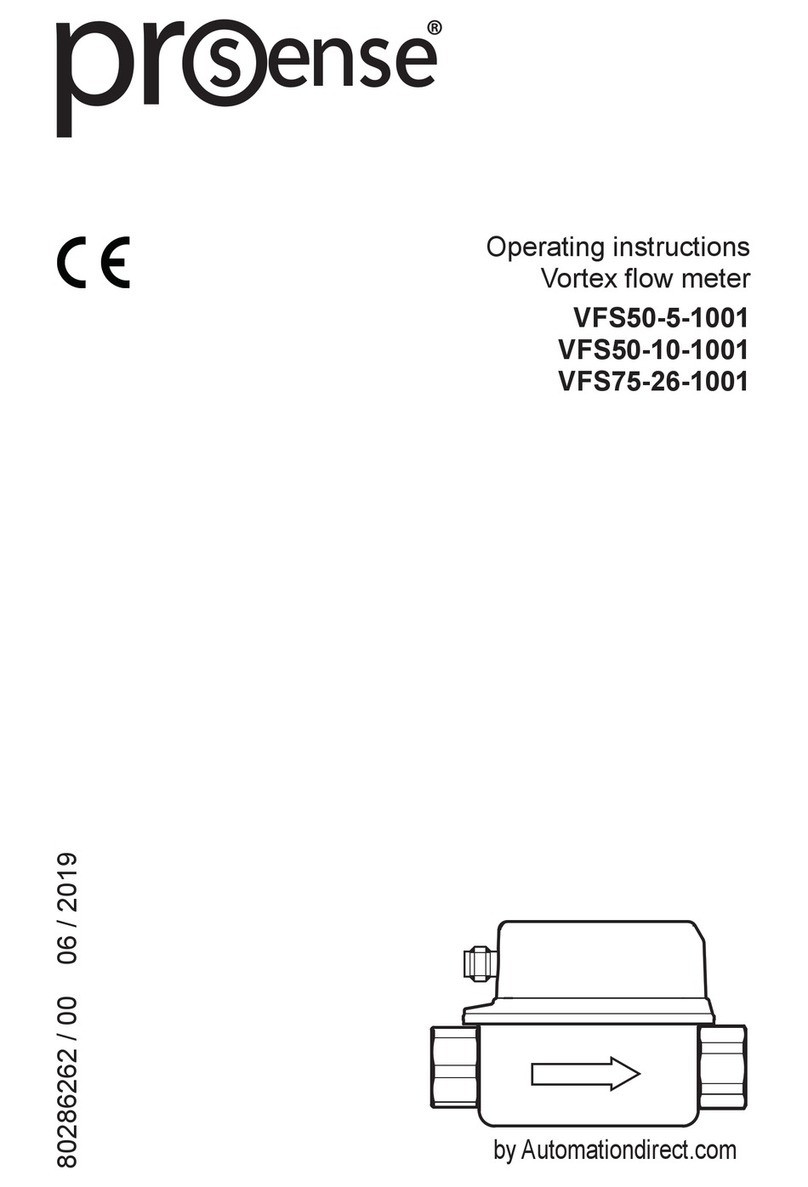
AutomationDirect
AutomationDirect ProSense VFS50-5-1001 User manual

AutomationDirect
AutomationDirect ProSense DPM3-E Series User manual
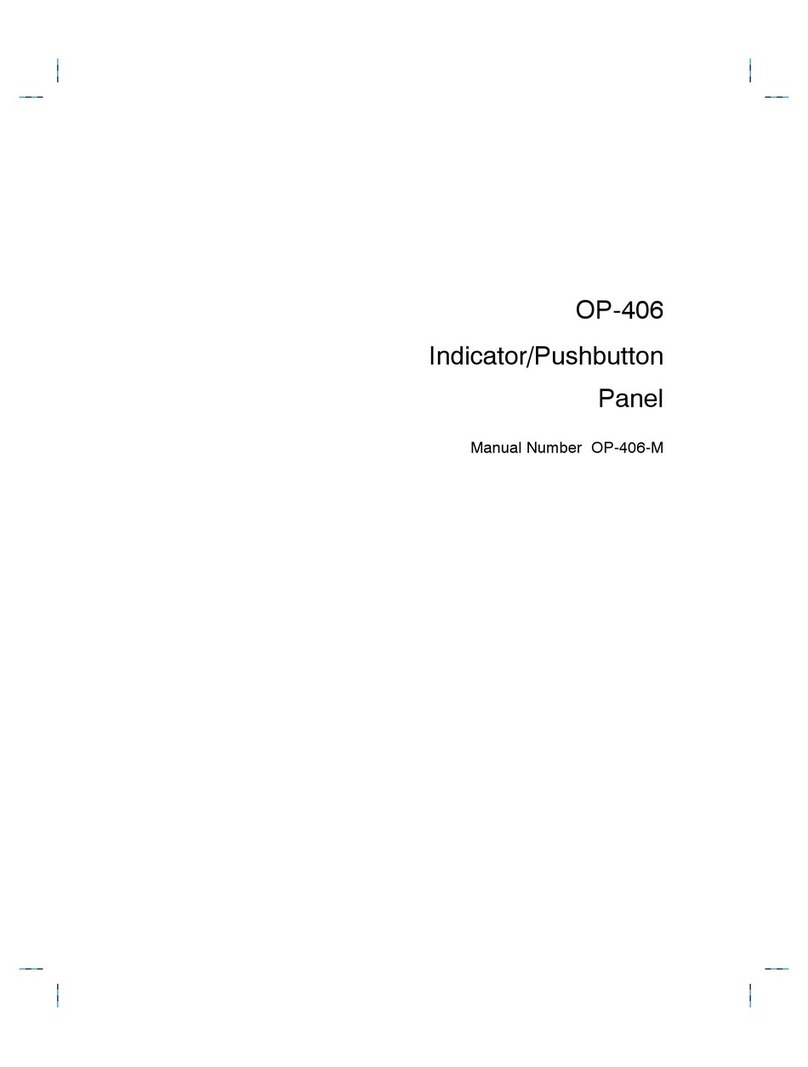
AutomationDirect
AutomationDirect OP-406 User manual
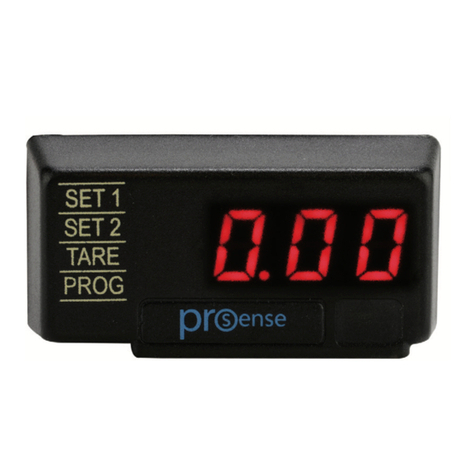
AutomationDirect
AutomationDirect ProSense DPM1 Series User manual

AutomationDirect
AutomationDirect ProSense DPM3-P Series User manual
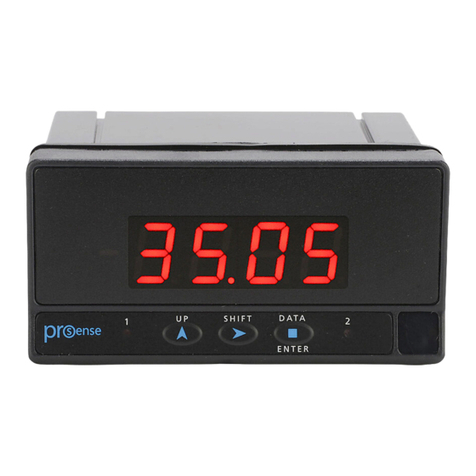
AutomationDirect
AutomationDirect ProSense DPM2 Series User manual

AutomationDirect
AutomationDirect ProSense DPM1-P Series User manual

AutomationDirect
AutomationDirect ProSense LPM1 Series User manual
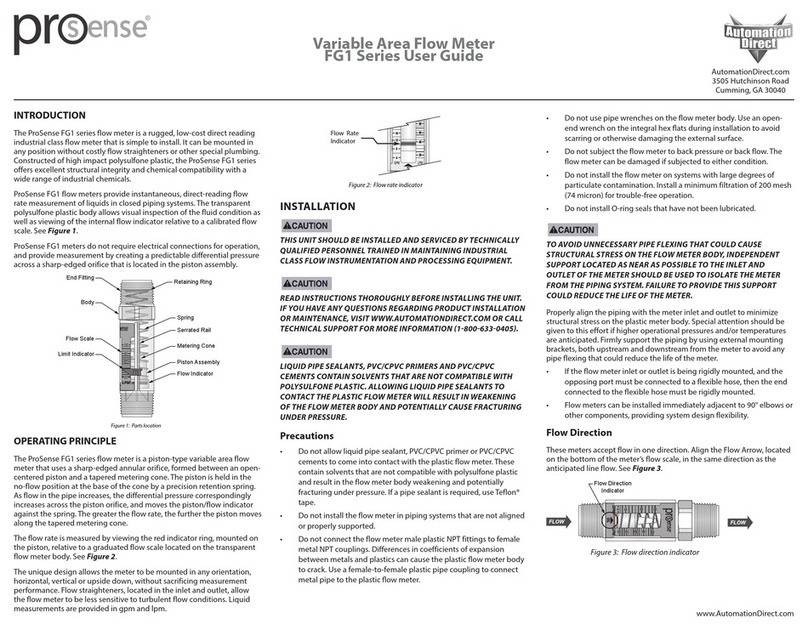
AutomationDirect
AutomationDirect ProSense FG1 Series User manual
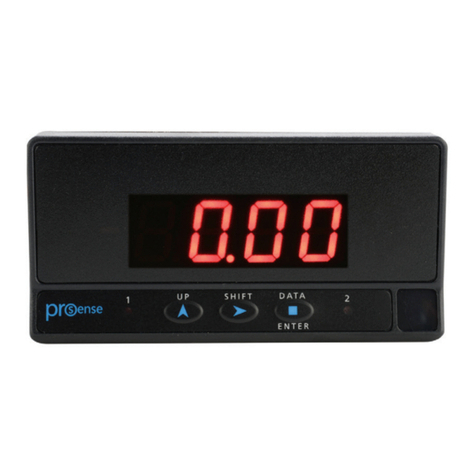
AutomationDirect
AutomationDirect ProSense DPM2-E Series User manual
